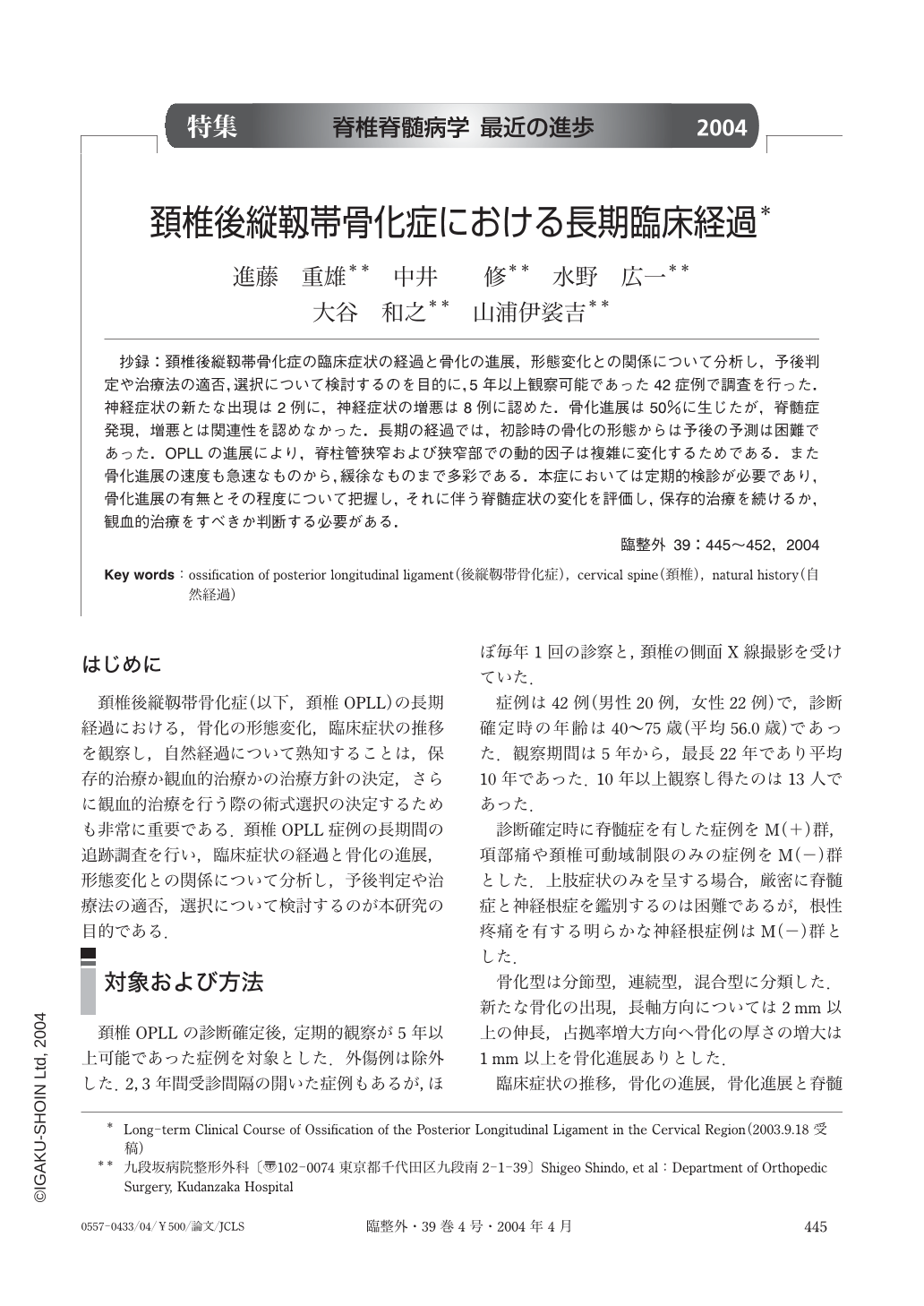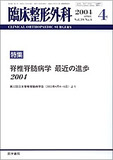Japanese
English
- 有料閲覧
- Abstract 文献概要
- 1ページ目 Look Inside
抄録:頚椎後縦靱帯骨化症の臨床症状の経過と骨化の進展,形態変化との関係について分析し,予後判定や治療法の適否,選択について検討するのを目的に,5年以上観察可能であった42症例で調査を行った.神経症状の新たな出現は2例に,神経症状の増悪は8例に認めた.骨化進展は50%に生じたが,脊髄症発現,増悪とは関連性を認めなかった.長期の経過では,初診時の骨化の形態からは予後の予測は困難であった.OPLLの進展により,脊柱管狭窄および狭窄部での動的因子は複雑に変化するためである.また骨化進展の速度も急速なものから,緩徐なものまで多彩である.本症においては定期的検診が必要であり,骨化進展の有無とその程度について把握し,それに伴う脊髄症状の変化を評価し,保存的治療を続けるか,観血的治療をすべきか判断する必要がある.
Forty-two cases of ossification of the posterior longitudinal ligament (OPLL) in the cervical spine with more than 5 years of follow up were investigated in regard to the relation between clinical course and progression of ossification. Two cases became complicated by myelopathy, and neurological deterioration occurred in 8 cases. Progression of the ossification was detected in 50% of the cases, but it unrelated to aggravation of the myelopathy. Thus it is difficult to preaset the long-term outcome of myelopathy based on the status of ossification at the time of the first examination. As OPLL progresses, both stenotic and dynamic factors in the spinal canal change in a complex manner. Progression of OPLL causes spinal canal stenosis, but dynamic factors may resolve if the ossification results in interbody fusion. Moreover, the rate of progression ranges from slow to rapid. Regular examinations are necessary in cases of OPLL, and the decision as to whether to treat conservativety, or surgically can be made based on information concerning the progression of ossification, its rate, and changes in clinical symptoms.

Copyright © 2004, Igaku-Shoin Ltd. All rights reserved.


